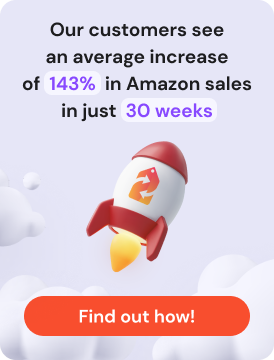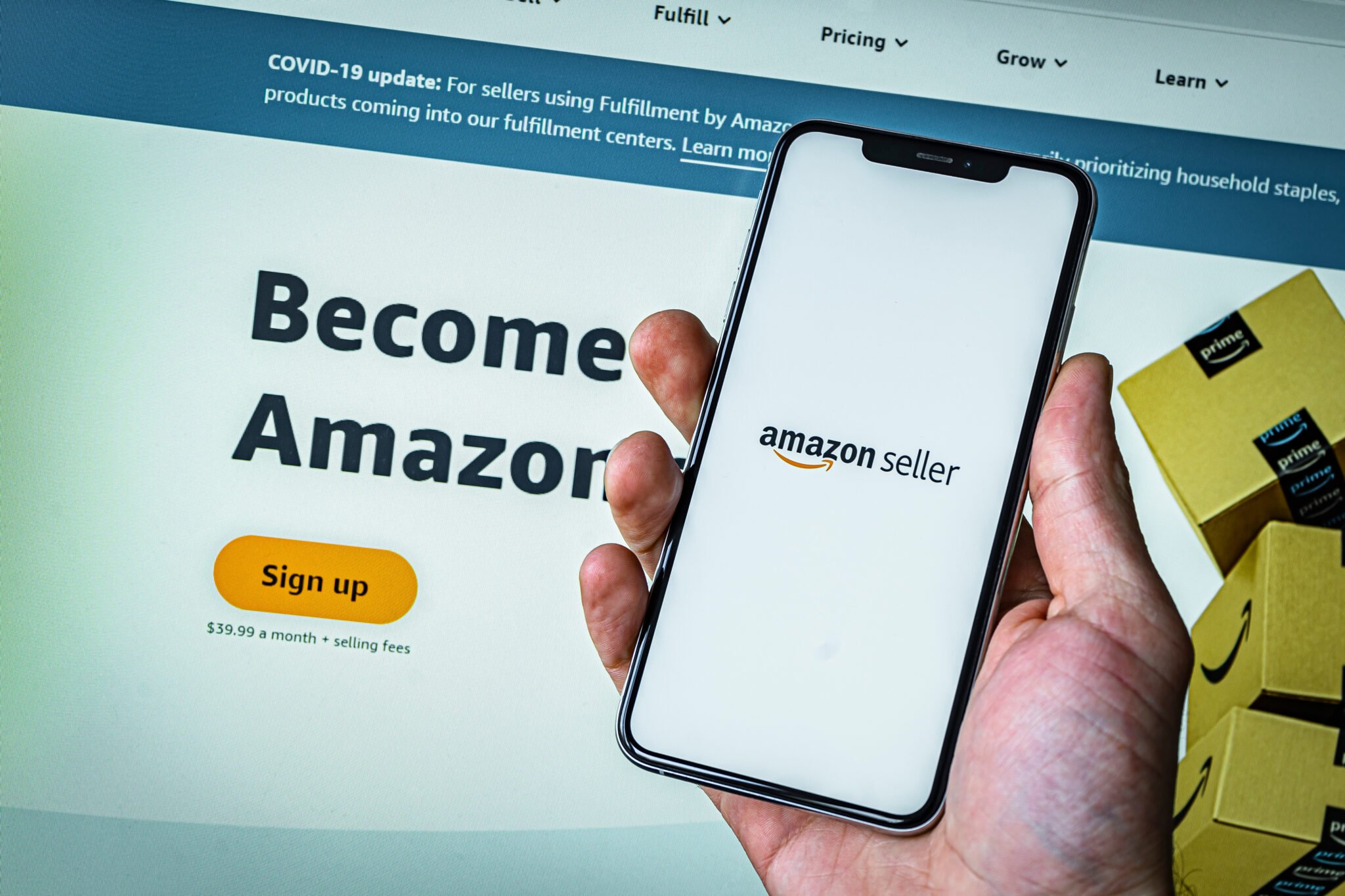AI repricing is reshaping how Amazon sellers compete—using machine learning to optimize prices in real time. This guide explains how Amazon AI repricers work, what makes them different from rule-based tools, and why top sellers are making the switch to boost Buy Box wins, protect margins, and scale profitably in 2025.
The Evolution of Amazon Repricing: From Static Rules to Intelligent Automation
The Amazon marketplace has transformed dramatically over the past decade. What started as a platform where sellers could manually adjust prices a few times per week has evolved into a hyper-competitive environment where prices change multiple times per hour. Traditional Amazon repricer solutions, while helpful, often rely on pre-set rules that struggle to adapt to the complexity of modern marketplace dynamics. Understanding what repricing means and why it matters is the first step in appreciating the revolutionary shift that AI brings to pricing strategy.
Enter artificial intelligence. AI-powered repricing represents the next generation of pricing optimization, leveraging machine learning algorithms to analyze vast amounts of data and make intelligent pricing decisions in milliseconds. Unlike rigid rule-based systems, AI repricers learn from market patterns, competitor behavior, and your business performance to continuously improve pricing strategies without constant manual intervention.
For Amazon sellers facing increasing competition and margin pressure in 2025, AI repricing isn’t just a technological upgrade—it’s becoming a competitive necessity. The benefits are clear: faster response times, smarter pricing decisions, better margin protection, and ultimately, more profitable growth.
What Is an AI Repricer?
An AI repricer is an advanced pricing automation tool that uses machine learning algorithms to dynamically adjust product prices on Amazon. Rather than following static if-then rules, these systems analyze multiple data points simultaneously—including competitor pricing, historical sales data, Buy Box ownership patterns, inventory levels, time of day, seasonality, and market demand signals.
Here’s how the AI repricing process works:
Data Input → The system continuously monitors your products, competitors, market conditions, sales velocity, and inventory levels
Machine Learning Analysis → AI algorithms identify patterns, predict optimal price points, and evaluate risk vs. reward scenarios
Intelligent Price Adjustment → Prices are automatically updated in real time based on what the AI has learned will maximize your business objectives
Continuous Learning → The system tracks outcomes and refines its decision-making model over time
What sets AI repricers apart is their ability to learn and adapt. As the system gathers more data about how your products perform at different price points and under various market conditions, it becomes increasingly accurate at predicting the optimal price for any given moment. This self-improving capability means your pricing strategy gets smarter every day without requiring additional setup or manual rule adjustments.
AI vs. Rule-Based Repricing: Understanding the Critical Differences
The distinction between traditional rule-based repricing and AI-powered repricing represents a fundamental shift in how pricing decisions are made. Understanding these differences is crucial for sellers evaluating their repricing strategy.
| Feature | Rule-Based Repricing | AI-Powered Repricing |
| Speed | Scheduled (every 15-60 minutes) | Real-time (continuous monitoring) |
| Flexibility | Static rules requiring manual updates | Adaptive learning that evolves automatically |
| Competitor Response | Manual or fixed logic (e.g., “match lowest”) | Dynamic and predictive based on patterns |
| Margin Protection | Basic min/max thresholds | Smart optimization balancing multiple factors |
| Market Adaptation | Requires rule changes when market shifts | Automatically adjusts to market changes |
| Learning Capability | No learning—performs same way over time | Improves continuously from outcomes |
| Best For | Simple catalogs with stable competition | Performance-focused sellers in dynamic markets |
Rule-based repricing operates on predetermined logic: “If competitor price is X, then set my price to Y.” While straightforward, this approach has significant limitations. Rules must be manually created and updated for each scenario, and they can’t account for the complex interplay of factors that influence buying decisions. When market conditions change, your rules may become outdated, leading to lost sales or eroded margins.
AI-powered repricing takes a fundamentally different approach. Instead of following rigid rules, the AI evaluates hundreds of variables simultaneously to determine the optimal price at any moment. It can recognize that your product sells better at certain times of day, that specific competitors are more influential on Buy Box decisions, or that slight price increases during low-inventory periods can boost profits without hurting sales velocity.
For sellers managing simple catalogs in stable markets, rule-based repricing may suffice. However, for those with competitive product categories, multiple competitors, or growth ambitions, AI repricing delivers measurably better results.
How AI Repricing Transforms Amazon Performance
The practical benefits of AI repricing extend far beyond faster price updates. When implemented effectively, AI repricing creates a compounding advantage across multiple performance metrics.
More Buy Box Wins Without Racing to the Bottom
One of the most significant advantages of AI repricing is its ability to win the Amazon Buy Box more frequently without defaulting to the lowest price. Traditional repricers often create a “race to the bottom” dynamic, where multiple sellers using similar rules continuously undercut each other, destroying margins for everyone.
AI repricers use predictive analytics to identify the optimal price point—often not the lowest price—that maximizes Buy Box ownership. The algorithms understand that Amazon’s Buy Box algorithm considers multiple factors beyond price, including fulfillment method, seller rating, inventory availability, and shipping speed. By analyzing historical Buy Box winners and patterns, AI can identify pricing sweet spots that balance competitiveness with profitability.
Dynamic Pricing Based on Multiple Variables
Modern AI repricers don’t just react to competitor price changes—they proactively adjust based on a comprehensive analysis of market conditions:
Inventory Optimization: As inventory levels decrease, AI can incrementally raise prices to slow sales velocity and prevent stockouts, protecting profit margins when supply is constrained.
Time-Based Patterns: Machine learning identifies when demand peaks (specific hours, days, or seasons) and adjusts pricing accordingly to capture maximum value during high-demand periods.
Sales Velocity Analysis: If a product isn’t moving, AI can test lower price points to stimulate demand. Conversely, fast-moving items may support higher pricing.
Competitor Behavior Profiling: AI learns which competitors are most influential on your sales and prioritizes responding to their price changes while ignoring less relevant competitors.
Market Momentum: Algorithms detect trending products or categories and can capitalize on increased demand with strategic pricing.
Real-World Performance Impact
The performance improvements from AI repricing are measurable and significant. Consider this example: A mid-sized Amazon seller with approximately 200 SKUs across home and kitchen categories switched from a rule-based repricer to an AI-powered solution. Within 90 days, they documented:
- 117% increase in monthly revenue from the same product catalog
- 23% improvement in Buy Box ownership percentage
- 8% higher average profit margins due to smarter pricing decisions
- 67% reduction in time spent on pricing management
These results weren’t achieved by simply lowering prices—in fact, average selling prices increased slightly. The AI identified opportunities to price higher when conditions supported it while becoming more competitive only when necessary to defend critical sales.
For Amazon FBA sellers, AI repricing is particularly powerful. The algorithms can factor in FBA’s advantages (Prime eligibility, faster shipping) to maintain higher price points while still winning the Buy Box against merchant-fulfilled competitors.
Leading Amazon AI Repricers in 2025
The AI repricing landscape has matured significantly, with several platforms offering sophisticated machine learning capabilities. Here’s an overview of top solutions for Amazon sellers:
Repricer.com – Industry-Leading AI Intelligence
Repricer.com has established itself as the premier choice for Amazon sellers seeking advanced AI repricing capabilities combined with exceptional usability. The platform’s machine learning algorithms analyze over 50 variables simultaneously to determine optimal pricing strategies, including competitor patterns, sales velocity, inventory levels, and seasonal trends. Learn more about the benefits of using AI repricing tools and why sellers are making the switch.
Key Advantages:
- Proprietary AI engine that continuously learns from your sales data
- Real-time repricing with sub-second response times
- Intelligent Buy Box optimization that balances price and profitability
- Comprehensive features including multi-channel support
- Advanced analytics and reporting dashboard
- Exceptional customer support with dedicated account management
Best For: Serious Amazon sellers across all categories—from private label brands to wholesale distributors—who want cutting-edge AI technology backed by proven results and outstanding support.
Seller Snap – Analytics-Focused AI Platform
Seller Snap offers advanced analytics alongside AI repricing, making it popular with data-driven sellers who want deep insights into their pricing performance.
Key Features:
- Strong competitor analysis tools
- Customizable AI learning parameters
- Detailed performance reporting
- Multi-marketplace support
Best For: Sellers who prioritize data analysis and want granular control over AI behavior settings.
Aura Repricer – FBA Brand Optimization
Aura Repricer focuses specifically on FBA sellers and private label brands, with AI algorithms optimized for branded product strategies.
Key Features:
- Brand protection controls
- MAP pricing enforcement capabilities
- FBA-specific optimization logic
- Inventory-aware repricing
Best For: Private label brands and exclusive FBA sellers prioritizing brand value protection.
Informed.co – Multichannel AI Pricing
Informed.co extends AI repricing beyond Amazon to multiple eCommerce channels, ideal for sellers with diverse marketplace presence.
Key Features:
- Cross-channel price synchronization
- Unified dashboard for multiple marketplaces
- Competitive intelligence across platforms
- Flexible pricing strategies per channel
Best For: Multi-channel sellers managing inventory across Amazon, eBay, Walmart, and other platforms.
BQool (AI Plan) – Budget-Conscious AI Option
BQool offers an AI-enhanced plan at a more accessible price point, making machine learning repricing available to smaller sellers.
Key Features:
- Essential AI repricing capabilities
- User-friendly interface
- Affordable pricing tiers
- Basic automation features
Best For: Growing sellers who want to test AI repricing without significant upfront investment.
Implementation: Setting Up Your AI Repricer for Success
Implementing an AI repricer is straightforward, but following best practices ensures you maximize results from day one.
Step-by-Step Setup Process
- Define Your Pricing Boundaries
Before activating any AI repricer, establish your minimum and maximum price thresholds for each product or product category. These guardrails ensure the AI operates within acceptable ranges that protect your margins and maintain your brand positioning.
- Minimum Price: Calculate your break-even point plus desired minimum profit margin
- Maximum Price: Set based on market research, competitor positioning, or MSRP
- Strategy Objective: Decide whether you’re prioritizing sales velocity, profit maximization, or Buy Box ownership
- Connect Your Product Catalog
Link your Amazon seller account and select which ASINs you want the AI to manage. Most platforms allow you to:
- Import your entire catalog or select specific products
- Group products by category for consistent strategy application
- Set different rules for different product segments (e.g., high-margin vs. high-volume items)
- Allow for the Learning Period
AI repricers need time to collect data and identify patterns. During the initial 1-2 weeks:
- The system observes competitor behavior and market dynamics
- Algorithms test different price points to measure response
- Machine learning models calibrate based on your specific products and market
Important: Don’t judge performance prematurely. Initial results may vary as the AI explores optimal strategies. Most sellers see stabilized, improved performance after 2-3 weeks.
- Monitor Key Performance Indicators
Track these metrics to evaluate AI repricing effectiveness:
- Buy Box Percentage: Are you winning the Buy Box more frequently?
- Sales Velocity: Is revenue increasing without sacrificing profit?
- Profit Per Unit: Are margins being maintained or improved?
- Price Change Frequency: How actively is the AI adjusting prices?
- Competitive Position: How does your pricing compare to key competitors?
- Refine Guardrails as Needed
While AI repricers operate autonomously, periodic review ensures alignment with business goals. After the learning period, you might:
- Adjust min/max thresholds based on performance data
- Modify strategy objectives for specific product categories
- Exclude certain competitors from consideration if their behavior is disruptive
Expected Time-to-Value
Most sellers experience measurable improvements within 1-2 weeks of implementation, with full optimization typically achieved by week 4-6. The beauty of AI repricing is that performance continues improving over time as the algorithms gather more data and refine decision-making models.
Addressing Common Concerns About AI Repricing
Despite the clear advantages, some sellers hesitate to adopt AI repricing due to misconceptions about how the technology works.
“AI Will Undercut My Prices and Destroy My Margins”
Reality: This is the most common misconception. Quality AI repricers are designed to protect profitability, not sacrifice it. The algorithms optimize for your defined objectives—which typically include margin protection alongside sales growth. Understanding how repricing helps you win the Amazon Buy Box reveals that intelligent pricing isn’t about being the cheapest—it’s about being competitive at the right moments.
Unlike simple rule-based systems that might automatically match the lowest price, AI evaluates whether undercutting is actually necessary to achieve your goals. Often, the AI discovers that maintaining a slightly higher price while optimizing other factors (timing, inventory positioning, competitor selection) delivers better overall profitability.
Your minimum price settings serve as absolute guardrails that AI will never cross, ensuring margin protection is always maintained.
“AI Repricing Is Too Complicated to Use”
Reality: Modern AI repricers prioritize user experience and simplicity. While the underlying algorithms are sophisticated, the interfaces are designed for non-technical users. Setup typically involves:
- Connecting your Amazon account (one-click authorization)
- Setting min/max prices (simple input fields)
- Selecting your strategy objective (dropdown menu)
- Activating repricing (single button)
Most platforms provide intuitive dashboards that visualize performance without requiring data science expertise. If you can manage a basic Amazon Seller Central account, you can successfully use an AI repricer.
“It Replaces My Pricing Control”
Reality: AI repricing enhances your control by automating tactical decisions while you maintain strategic oversight. You always retain authority over:
- Which products to include in repricing
- Minimum and maximum price boundaries
- Overall strategy objectives and priorities
- The ability to pause or override AI decisions at any time
Think of AI repricing as an intelligent assistant that handles the repetitive, time-consuming work of monitoring competitors and adjusting prices, freeing you to focus on sourcing, marketing, and business growth.
“My Catalog Is Too Small for AI”
Reality: While AI repricing delivers the most dramatic results for larger catalogs, even sellers with 20-50 SKUs can benefit—especially if those products face significant competition or require frequent price adjustments. The key consideration isn’t just catalog size but competitive intensity and pricing complexity.
Is AI Repricing Right for Your Amazon Business?
AI repricing isn’t universally necessary for every seller, but it delivers substantial advantages for specific business profiles.
AI Repricing Is Ideal For:
High-Volume Sellers (50+ SKUs): Managing frequent price changes manually becomes impractical at scale. AI repricing handles the complexity automatically.
Competitive Categories: If your products face 5+ competitors who frequently adjust prices, AI repricing helps you stay competitive without constant monitoring. Learn about proven repricing strategies that work in highly competitive markets.
FBA and Private Label Brands: AI algorithms can leverage fulfillment advantages and brand positioning to optimize profitability while maintaining Buy Box presence.
Growth-Focused Sellers: If you’re reinvesting profits into inventory expansion and can’t afford to leave money on the table through suboptimal pricing, AI delivers measurable ROI.
Multi-Marketplace Sellers: Managing consistent pricing strategies across Amazon, eBay, Walmart, and other channels becomes exponentially easier with AI automation.
Sellers Valuing Time: If you’re spending more than 2-3 hours weekly on pricing adjustments and competitor monitoring, AI repricing immediately pays for itself in time savings alone.
AI Repricing May Not Be Necessary If:
You Have Very Few SKUs: Sellers with fewer than 10 products who rarely adjust prices may not need automated repricing at all—though monitoring competitors is still advisable.
Your Products Have Little Competition: If you sell unique products or have exclusive distribution rights with minimal competition, manual pricing may suffice.
Your Prices Are Fixed (MAP/MSRP): Products with manufacturer-enforced pricing don’t require dynamic repricing, though AI tools can still help with compliance monitoring.
You’re Testing the Market: Brand new sellers still validating product-market fit might focus on other priorities before investing in repricing automation.
The key question isn’t whether AI repricing is technologically impressive—it clearly is—but whether it solves real problems for your specific business and delivers measurable ROI. For most established Amazon sellers facing competitive pressure, the answer is yes.
Conclusion: The Future of Amazon Pricing Is Intelligent
The Amazon marketplace continues evolving toward greater complexity, faster competition, and thinner margins. Succeeding in this environment requires more than hard work and intuition—it demands intelligent tools that can process vast amounts of data and make optimal decisions at machine speed. Exploring the future of repricing reveals how AI and machine learning will continue transforming eCommerce pricing strategies.
AI repricing represents the cutting edge of pricing optimization, combining the power of machine learning with the practical realities of Amazon selling. By continuously learning from market patterns, competitor behavior, and your business performance, AI repricers deliver pricing strategies that adapt and improve over time without constant manual intervention.
The results speak for themselves: more Buy Box wins, protected margins, increased revenue, and freed-up time to focus on strategic growth initiatives. As AI technology continues advancing and becoming more accessible, the competitive advantage shifts from those who adopt it early to those who master its implementation.
For Amazon sellers serious about scaling profitably in 2025 and beyond, AI repricing isn’t just a nice-to-have feature—it’s becoming table stakes for competitive success.
Ready to experience next-generation pricing? Discover how Repricer.com’s industry-leading AI repricing platform can transform your Amazon performance. Start your free trial and see the difference intelligent automation makes.
Frequently Asked Questions About AI Repricing
What is an AI repricer on Amazon?
An AI repricer is an automated pricing tool that uses machine learning algorithms to dynamically adjust your Amazon product prices in real time. Unlike traditional rule-based repricers that follow pre-set instructions, AI repricers analyze multiple data points—including competitor pricing, sales velocity, Buy Box patterns, inventory levels, and market trends—to determine the optimal price for each product at any given moment. The system continuously learns from outcomes and refines its pricing strategy over time.
How is AI repricing different from rule-based repricing?
The fundamental difference lies in adaptability and intelligence. Rule-based repricers follow static if-then logic that must be manually configured and updated (“if competitor price is $29.99, set my price to $29.49”). AI repricers use machine learning to analyze hundreds of variables simultaneously and make intelligent decisions without predefined rules. AI systems learn from patterns, adapt to market changes automatically, and continuously improve their decision-making based on results—something rule-based systems cannot do.
Is AI repricing safe for my margins?
Yes, when properly configured. AI repricers are designed to optimize profitability, not sacrifice it. You maintain complete control by setting minimum and maximum price boundaries that the AI will never exceed. Quality AI repricers prioritize your business objectives—whether that’s maintaining margins, increasing sales velocity, or winning the Buy Box—and make pricing decisions that support those goals. The algorithms are sophisticated enough to recognize when undercutting isn’t necessary and often discover that maintaining higher prices with strategic timing delivers better overall profitability.
What types of sellers benefit most from AI repricing tools?
AI repricing delivers the strongest ROI for sellers with competitive catalogs (50+ SKUs), those in highly competitive categories with frequent price changes, FBA sellers leveraging Prime fulfillment advantages, private label brands balancing profitability with market share, and growth-focused sellers who need to maximize revenue without constant manual oversight. Multi-marketplace sellers managing pricing across multiple platforms also benefit significantly from AI automation.
Can I still set pricing rules with an AI repricer?
Yes. AI repricers don’t eliminate your control—they enhance it. You always set strategic parameters including minimum and maximum prices, strategy objectives (prioritize Buy Box, maximize profit, increase sales velocity), which products to reprice, and which competitors to monitor or ignore. The AI handles tactical execution within your defined guardrails, making thousands of micro-decisions you wouldn’t have time to make manually. You can adjust these parameters anytime, pause repricing, or override AI decisions when necessary.
How long does it take to see results from AI repricing?
Most sellers notice initial improvements within 1-2 weeks as the AI completes its learning period and begins optimizing pricing strategies. Full optimization typically occurs by week 4-6, though performance continues improving over time as the algorithms gather more data. During the first two weeks, the AI observes market patterns and tests different approaches, so it’s important not to judge performance prematurely. The longer the system runs, the more effective it becomes at predicting optimal pricing for your specific products and market conditions.
Do AI repricers work for all Amazon product categories?
AI repricing is effective across most Amazon categories, but delivers the strongest results in competitive markets where prices fluctuate frequently and multiple sellers compete for the Buy Box. Categories like electronics, home and kitchen, toys, sports and outdoors, and health and household typically see excellent results. Highly specialized or unique products with limited competition may not need AI repricing, and categories with strict MAP (minimum advertised price) policies have less flexibility for dynamic pricing. However, the technology adapts to whatever market conditions exist for your specific products.
What’s the typical ROI for implementing an AI repricer?
ROI varies based on catalog size, competitive intensity, and previous pricing methods, but most sellers experience measurable improvements in Buy Box ownership (15-30% increase), revenue growth (20-50% or higher), and margin protection (maintaining or improving profitability despite competitive pressure). Time savings are also significant—sellers often reclaim 5-10+ hours weekly previously spent on manual pricing adjustments. For a seller generating $50,000 monthly revenue, even a conservative 20% improvement represents $10,000 in additional monthly revenue, far exceeding typical repricing software costs.




